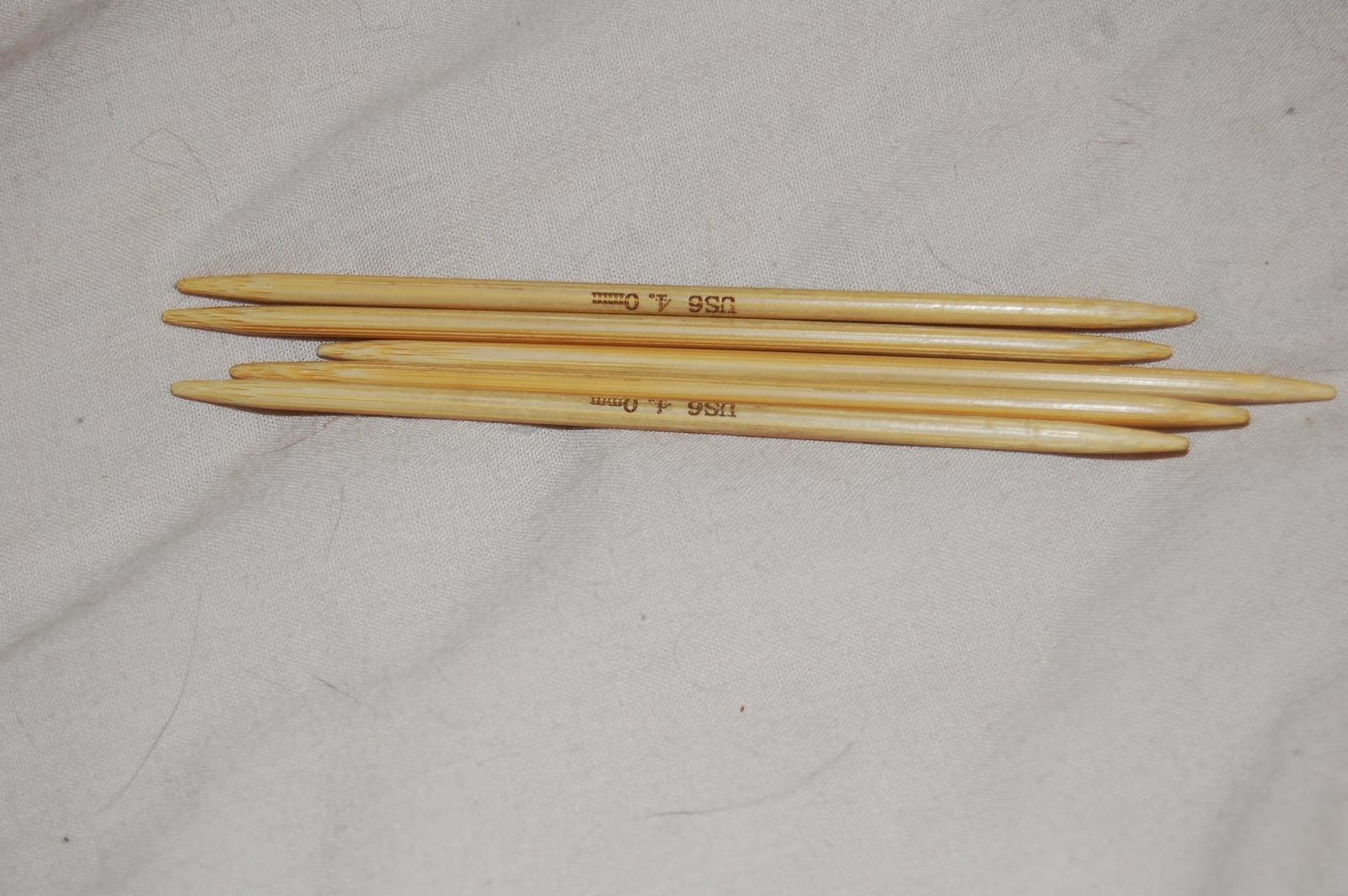My answer? It's very much down to the individual and how you like the feel of different materials in your hands. I'll start with hooks, because there seems to be a little less choice involved with them than with needles.
Crochet hooks come in a range of sizes. The smallest run to about .6mm, and the largest can be upwards of 10mm. (American sizes use letters, but I find the millimetre to be more exact.) The sizes, like those of knitting needles, are dependant on the thickness of the yarn. Cobweb and laceweight yarn use the smaller needles, while working up through the different sizes you use bigger and bigger hooks or needles. More on that below.
 |
| My set of crochet hooks. The one with a hook at each end is two different sizes. |
Disclaimer: It is my firm opinion that hooks and needles are a very personal thing. What one person really likes using, another person might not like. I will not recommend any kind of needle or hook for this reason, but will only say what I like using and encourage you to try different types yourself. Many local yarn stores will let you try out a type of hook or needle before buying. It can't hurt to ask.
Needle are made of much the same things. Wood, metal, and plastic seem to be the default materials, but with knitting I find that depending on the yarn you use, you will want to use different types of needles. Because in knitting you have many stitches on the needles, what yarn you use will be affected more than in crochet, where you have at most two or three loops on your hook.
Slipperiest of all are the metal needles. These are either nickel or stainless steel as far as I know, and different manufacturers will advertise what their needles are made of. One yarn I usually use metal needles for is silk yarn. It tends to grip the needle, and when I tried to knit with silk on a wooden needle, I could hardly slide it up and down. Switching to metal made it much easier to work the rows.
Next comes plastic needles. These are hard and durable, usually the cheapest of the needles, and I started on these. I found they worked pretty well for most types of yarn, but the ends are blunter than wooden or metal needles as a general rule, so if you're trying to work fine or splitty yarn, they might not be ideal.
Finally, the wooden needles. These are comprised of either hardwoods like the KnitPro Symphonies, or bamboo. Bamboo needles are often soft on the hands, and warm up as you work, making them ideal for people with aches and pains in the hands or arms. Hardwood needles offer a superior gripping surface for the yarn, and are great for yarns that like to slide around a lot. If you're having trouble keeping yarn on the metal or plastic needles, go for the hardwoods.
 |
| Double pointed needles. |
 |
| One set of circular needle tips with different sized cables. |
One thing to remember with double pointed needles is that you only work with two at a time; most of the needles simply hold stitches, much as a straight needle does. Depending on the number of stitches in your row, you can either use all five, or just four. A minimum of three needles is needed to hold the stitches, and you work with the one not holding any. Rubber tips can be gotten to put on the end you're not working with so the stitches don't slide off.
I was going to cover tension swatches in this article as well, but I find I've rambled on somewhat about needles, so I'll leave that for next time. I'll leave you with this chart on what size needles work best with the different weights of yarn.
Laceweight (2-ply): 1.5-2.25 mm (US 000-1)
Fingering (also called sock weight or 4-ply): 2.25-3.25 mm (US 1-3)
Sport (also called baby or 5-ply): 3.25-3.75 mm (US 3-5)
DK (double knit): 3.75 - 4.5 mm (US 5-7)
Worsted and Aran: 4.5-5.5 mm (US 7-9)
Chunky: 5.5-8 mm (US 9-11)
Bulky (also called superchunky): 8 mm + (US 11 +)






No comments:
Post a Comment